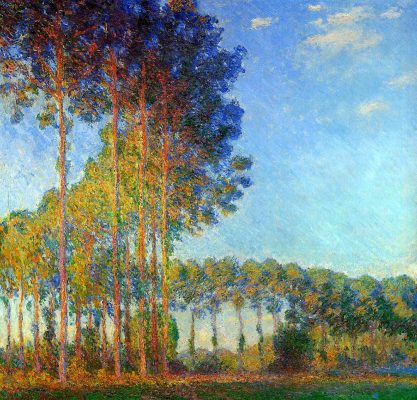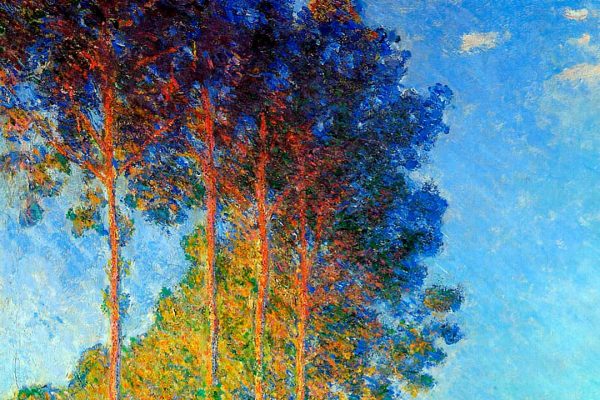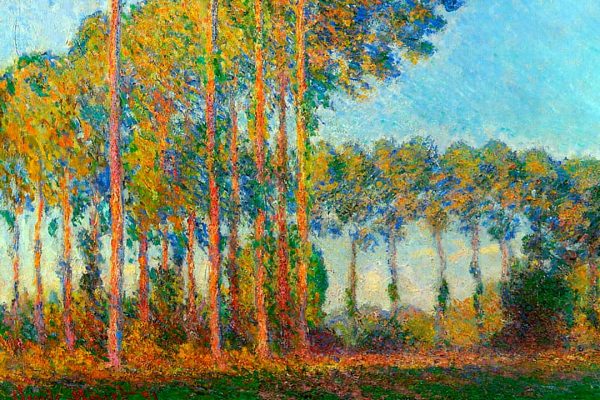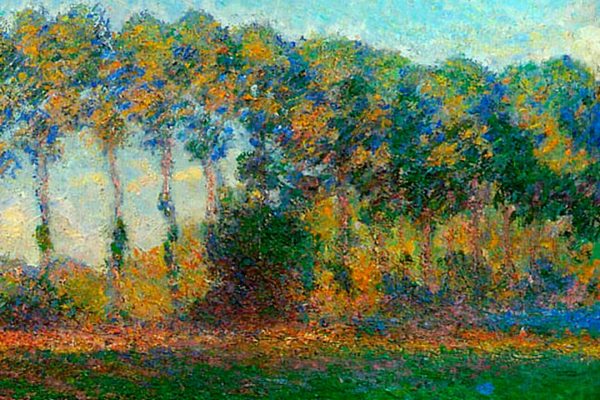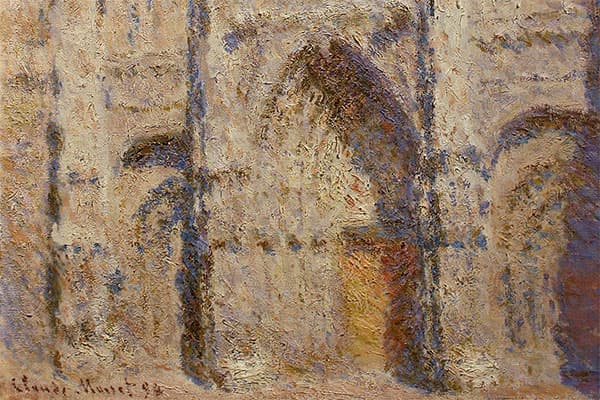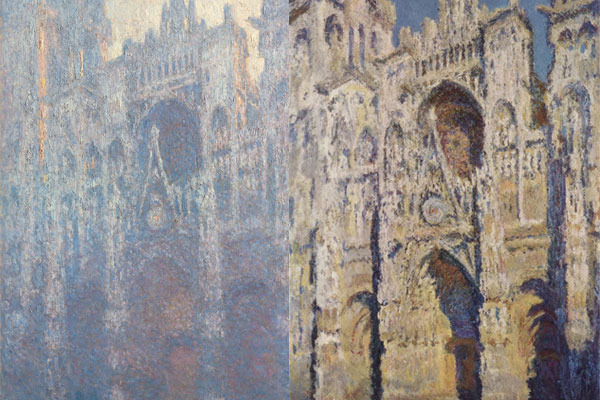Claude Monet · Poplars on the Epte
Claude Monet (France, 1840-1926), 1891. Oil on canvas, 88 x 93 cm. (34.6 x 36.6 in). Private collection
Claude Monet is the impressionist painter par excellence, and as such one of the best landscape painters of all time. Among his many contributions to modern Western art was the “series” of paintings, similar to those of Hokusai and Hiroshige, which influenced later painters like Andy Warhol. Monet’s most famous series are the “Haystacks” and the “Rouen Cathedral” series. Somewhat less known are his “Poplars” series, which nevertheless are an excellent example of Monet’s talent for painting nature.
In 1891, Monet was already a well known and well-paid painter. That allowed him not only to rent a boat in order to paint the poplars from the river, but also to convince (via previous payment) the owner of the trees (a lumber merchant) not to chop the poplars down until the painter had finished painting the entire series. It includes examples with simple compositions (such as “The Four Trees” at the Metropolitan Museum of Art), which reminds Mondrian’s neoplasticist paintings; as well as other pictures with more complex composition, of which “Poplars on the banks of the Epte” is the best example.
The composition so beautifully resembles the beauty of a Japanese haiku, asymmetric and touching, while the poplars’ leaves sing in red, purple, and finally in a blue that would make Yves Klein green with envy. It’s Monet in his full bloom, the artist who once told his family that he wanted “to paint as the bird sings”.
Monet exhibited this painting along with the rest of “poplars” at the Galerie Durand-Ruel in 1892. It was the second consecutive success for artist, following the exhibition of the “haystacks” series the previous year. After finishing this series, Monet focused his efforts on the most important series he ever created, the “Rouen Cathedral” series, often considered the “climax” of Impressionism.
G. Fernández – theartwolf.com
Follow us on:

